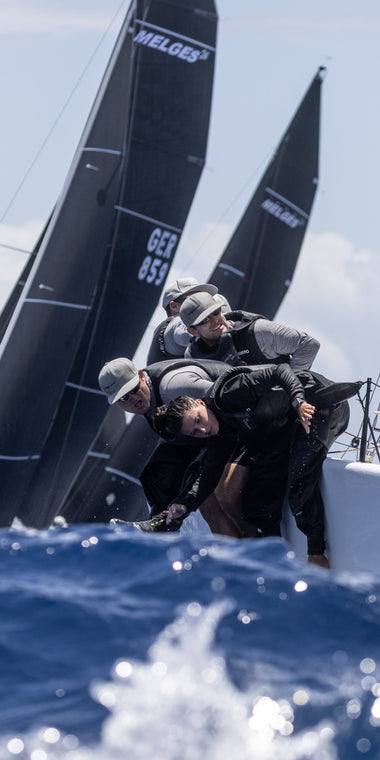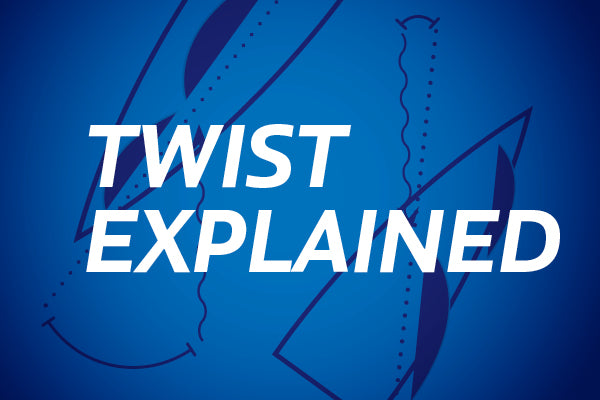UNDERSTANDING TWIST
TWIST EXPLAINED
By Bill Gladstone
In Upwind Sail Power, we defined the three sources of sail power: Angle of Attack, Depth, and Twist. Now we’ll focus on twist and how it impacts power and performance.
Twist
Twist describes the relative trim of the sail from high to low. A sail has lots of twist when the upper part of the leech is open, while a closed leech has little twist. Increasing twist reduces power because it opens the upper part of the sail.
More Twist = Less Power.

As with increasing angle of attack and depth, reducing twist adds power up to the point where the sail stalls and power drops.
More on Twist
Twist is necessary because due to less surface friction, the wind is stronger aloft than at the surface; this phenomenon is called wind gradient. True wind and boat speed combine to create apparent wind. The stronger true wind up high creates both a stronger apparent wind and a wider apparent wind angle aloft. The upper part of the sail must be twisted out relative to the lower part of the sail to match the more open apparent wind angle.

The sailmaker designs twist into the sail to match the average wind gradient and then we trim to fine-tune it, in order to match wind and sea conditions as well as our performance goals. Fine tuning twist is one the most powerful trim adjustments we can make.
The right twist for…
Light Air
Wind gradient is most pronounced in light air, so extra twist is needed. In addition, sails are prone to stalling in light air, and twist helps prevent that by easing flow. Likewise, a deep sail shape – used for extra power in light air – is prone to stalling, so trimming with plenty of twist is appropriate in light air. So, though it may be counter-intuitive – since adding twist reduces power – we trim with quite a bit of twist in light air to prevent stalling.
Moderate Air
In moderate winds, we can trim harder without stalling flow. This harder trim with less twist adds power and improves pointing.
Heavy Air
As the boat gets overpowered, we flatten sails and add twist to spill power. Thus, we sail with more twist in light air and heavy air and the least twist in moderate air.
Twist and Performance
Generally, less twist will help pointing while more twist is faster, with a wider steering groove. For example, coming out of a tack sails are initially trimmed with extra twist (to prevent stalling when slow), with final trim coming only as the boat accelerates to full speed. Likewise, in wavy conditions we trim for extra twist, to a more forgiving steering groove as the boat gyrates in waves. Reducing twist, on the other hand, maintains full power at a high pointing angle when sailing in smooth water.

Depowering your sail plan
Power can be reduced either by increasing twist or flattening the sail (or both). Which is best? In wavy conditions, it’s better to depower by adding twist, while in smooth water conditions flattening the sail is recommended.

Often some combination of twist and flattening is best. One of the challenges of trimming is achieving the correct total power, and the correct mix of power by adjusting depth and twist to match the conditions. Boom vang and cunningham can help to achieve the balance.
© Copyright Bill Gladstone



























